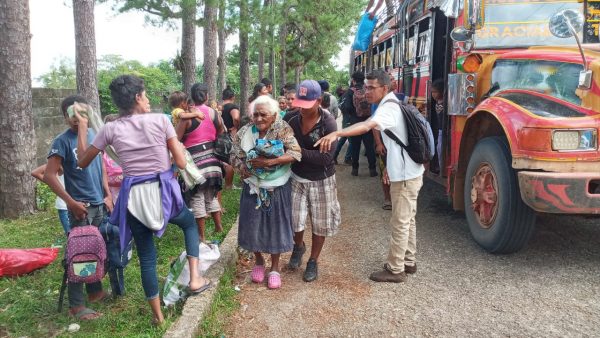Hurricane Iota Nears Nicaragua and Honduras
Expected to reach land as a Category 4 major storm

When Iota approaches the coasts of Nicaragua and Honduras, on Monday night, it will most likely be a major hurricane.
HAVANA TIMES – Hurricane Iota intensified throughout the day on Sunday on a direct course approaching Nicaragua and Honduras. These same two countries are still recovering from Hurricane Eta less than two weeks ago. By the time Iota reaches land on Monday night or Tuesday morning it is expected to be a major hurricane, according to the US National Hurricane Center (NHC).
At 10:00 PM (EST) Iota has maximum sustained winds of 105 miles per hour (165 km/h) and still increasing. Its minimum central pressure is 960 hectoPascal and dropping. The system is moving west at 10 mph (17 kp/h).
EDITOR’S NOTE: By Monday morning at 7:00 AM (EST) Iota’s winds have increased to 155 mph (245 km/h).
The Caribbean island of Providencia is close to receiving the full impact of the hurricane on Monday morning. A coastal strip that runs from Sandy Bay Sirpi, in Nicaragua, to Punta Patuca, Honduras are under hurricane warning. “Catastrophic winds”, heavy rains and storm surge are expected in the coastal areas.
Alerts activated
Civil defense authorities activated red alerts in several areas of these countries due to the imminent impact of Iota. The storm’s center was located at 10:00 p.m. (EST) at 80 miles (130 km) east of the Colombian island of Providencia and 235 miles (375 km) to the east-southeast of Cabo Gracias a Dios, on the border between Nicaragua and Honduras, according to the NHC..
Meteorologists predict that in parts of northeastern, Nicaragua and northern Honduras Iota could produce up to 30 inches (750 mm) of rainfall accumulation, with the consequent danger of severe flash floods, river overflows and landslides.
On the coasts of Nicaragua and Honduras, the NHC warns of a “dangerous” raising of sea levels. This could be up to 15 feet (4.5 meters) above normal. Authorities are also on alert for possible overflowing rivers in several northern Nicaraguan towns and cities including Jinotega and Matagalpa. Likewise, in the mining triangle of Rosita, Bonanza and Siuna.
Additionally, Belize, El Salvador, Costa Rica, Panama and northern Colombia will also register heavy rains, according to the NHC.

On November 3, the category 4 hurricane Eta made landfall on the northeast coast of Nicaragua, with maximum sustained winds of 140 miles per hour (220 kilometers per hour). According to government calculations, Eta left some 1,890 houses destroyed and another 8,030 partially damaged. Major damage was also reported in Honduras and Guatemala.
So far there have been 30 named tropical storms in this very active season. Of those, 13 reached hurricane strength, five as major hurricanes. The Atlantic hurricane season officially ends on November 30th.
With information from EFE and the National Hurricane Center
Read more news from Nicaragua, Cuba and Latin America here on Havana Times.





